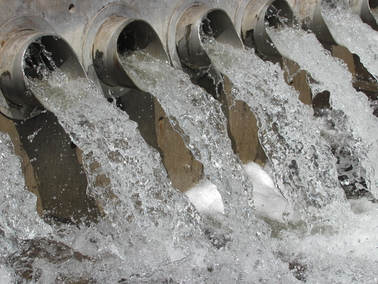
ASU water researchers in the spotlight

Posted: June 02, 2010
Arizona State University faculty members and researchers played significant roles in the first International Water Association Leading Edge Technology conference in North America.
The recent conference in Phoenix brought together experts from around the world to address challenges facing countries and communities in finding sustainable solutions to water and wastewater treatment needs.
“This is a very high-prestige international conference, and it is being held in Phoenix in large part because of the leading water research being done at ASU,” said Bruce Rittmann, an ASU Regents’ Professor who is the conference president.
Paul Westerhoff, director of the School of Sustainable Engineering and the Built Environment, a part of ASU’s Ira A. Fulton Schools of Engineering, has worked with the conference organizing committee.
“This is an opportunity for ASU and our sustainable engineering program to highlight our campus resources and ongoing research, which is breaking new ground in solving water-related challenges facing people around the globe,” Westerhoff said.
Representatives from research institutions, utility industries and governments focused this year on exploring new technologies to minimize negative impacts that water supply and treatment operations can have on the environment, particularly in consideration of climate change. They also examined water reuse and nutrient recovery issues.
Rittmann gave a key presentation on microbial photobioenergy, highlighting work at ASU in the use of photosynthetic bacteria to produce renewable energy from sunlight and carbon dioxide.
Rittmann is director of the Center for Environmental Biotechnology in the Biodesign Institute at ASU, and a faculty member in the School of Sustainable Engineering and the Built Environment.
ASU engineering professor Brad Allenby gave a featured conference presentation on an “earth systems engineering approach” to water issues.
“The usual concerns about water scarcity and water quality are seen as the result of suboptimal and ill-informed policy choices,” Allenby said. “We are looking at these issues from a broader earth systems view, which suggests that innovative policies, such as a robust global trading network in food – a major carrier of embedded water – might help manage water issues more effectively.”
Dan Childers, a professor in ASU’s School of Sustainability and associate director for research development for the university’s Global Institute of Sustainability, spoke about ASU’s new Phosphorous Initiative.
The initiative has been established to draw public awareness to the potential impacts of an emerging scarcity of phosphorous, a critical nutrient mineral.
“We depend on it for the fertilizers we use to grow our food crops, but it’s going to be increasingly scarce in the new few decades,” Childers said.
His presentation focused on the sustainability challenges we face with phosphorus availability and potential solutions to the problem related to urban wastewater systems.
The day before the start of the conference, participants had opportunities to tour ASU labs where water-related research is conducted.
Faculty members and researchers Rosa Krajmalnik-Brown, César Torres, Rolf Halden, David Ladner and Ravi Vannela led tours of Biodesign Institute and Ira A. Fulton Schools of Engineering research facilities.



































